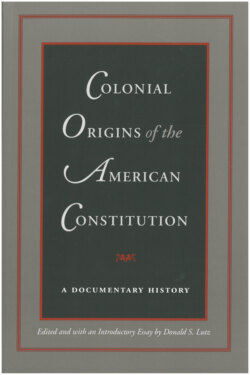Читать книгу Colonial Origins of the American Constitution - Группа авторов - Страница 26
На сайте Литреса книга снята с продажи.
Оглавление19
[Plymouth Agreement]
November 15, 1636
One might compare this text with the second paragraph of the Pilgrim Code of Law [20] where a version of the Plymouth Agreement was inserted as part of the preface. It is interesting that the paragraph in the Pilgrim Code of Law where this agreement was inserted indicates that both the Mayflower Compact (Plymouth Combination) and the original charter from King Charles (the letters-patent) compose the legal background to what is here identified as the Plymouth Agreement of 1636. This efficient and powerful statement of political liberty should be laid between the Mayflower Compact and the Declaration of Independence (1776) for comparison. When we read the entire Declaration of Independence, its status as a later differentiation of the symbols found in the Plymouth Agreement becomes apparent, just as the Mayflower Compact obviously stands as a precursor.
The text is taken from Harry M. Ward, Statism in Plymouth Colony (Port Washington, N.Y.: Kennikat Press, 1973), 17. His text is complete, and his spelling and marking are used.
We, the associates of New-Plymouth Coming hither as freeborn subjects of the State of England endowed with all and singular the privileges belonging to such being assembled; doe ordaine Constitute and enact that noe act imposition law or ordinance be made or imposed upon us at present, or to come but such as shall be imposed by Consent of the body of associates or their representatives legally assembled; which is according to the free liberties of England.
